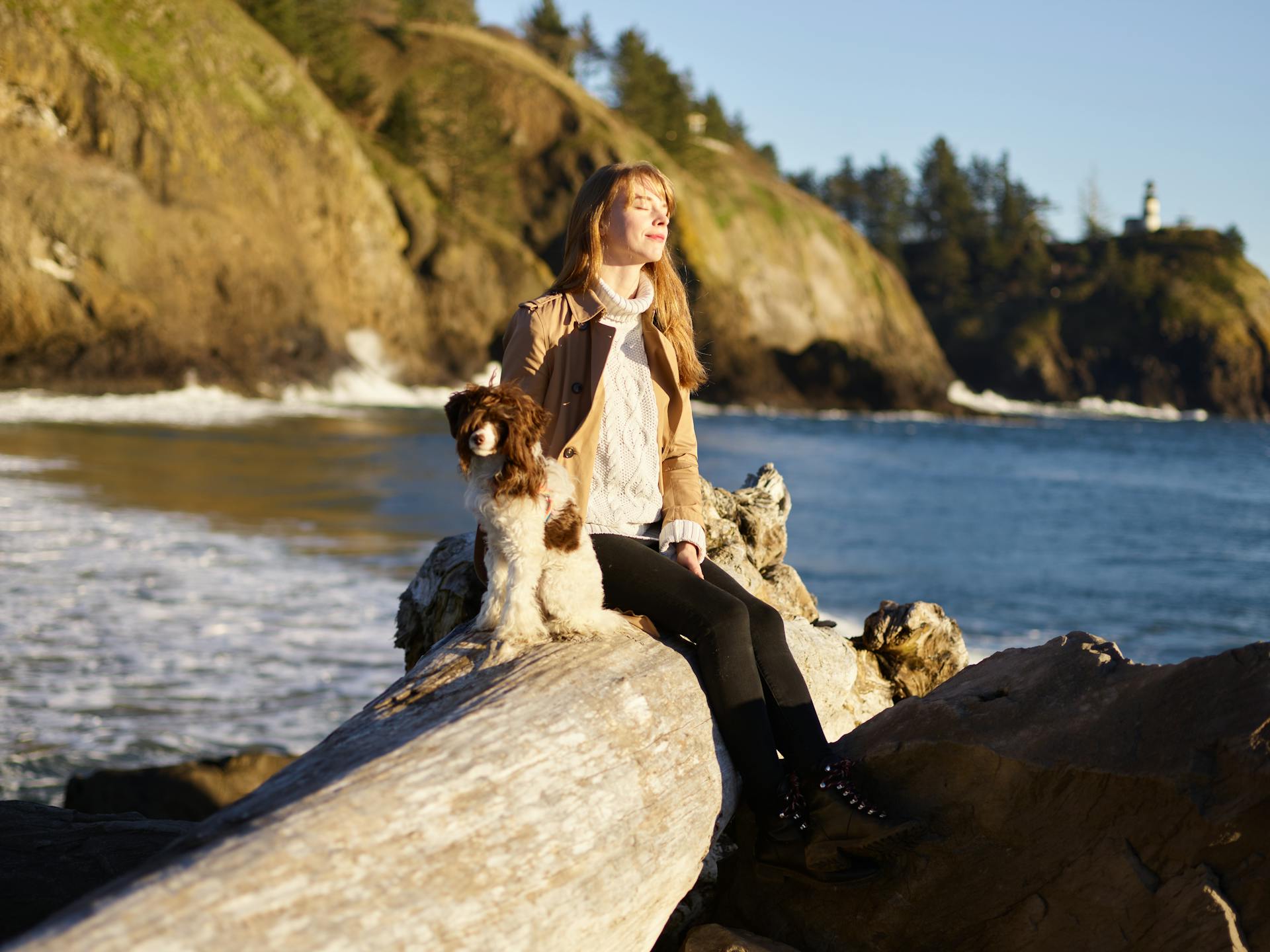
Did you know that there are over 340 recognized dog breeds in the world? This means that each breed has its unique characteristics, temperaments, and needs.
Some breeds, like the Greyhound, are bred for their speed and can reach up to 45 miles per hour. They're built for sprinting, with long legs and a lean body.
The Poodle, on the other hand, is known for its intelligence and trainability. They're highly responsive to commands and are often used as therapy dogs.
The Bulldog, with its distinctive wrinkled face, is a popular breed due to its affectionate and laid-back nature.
Choosing a Dog Breed
Choosing a dog breed can be a daunting task, but it's essential to consider the unique needs of each breed. Research is key to finding the right fit for your lifestyle.
The number of dog breeds can be overwhelming, with the AKC recognizing 201 breeds, the FCI listing 360 breeds, and the UKC recognizing over 376 breeds. This variety means there's a breed out there for everyone, but it's crucial to find one that suits your needs.
Each dog has its own requirements, and responsible breeding practices, early socialization, and training are crucial for a happy and healthy dog.
Breed Characteristics
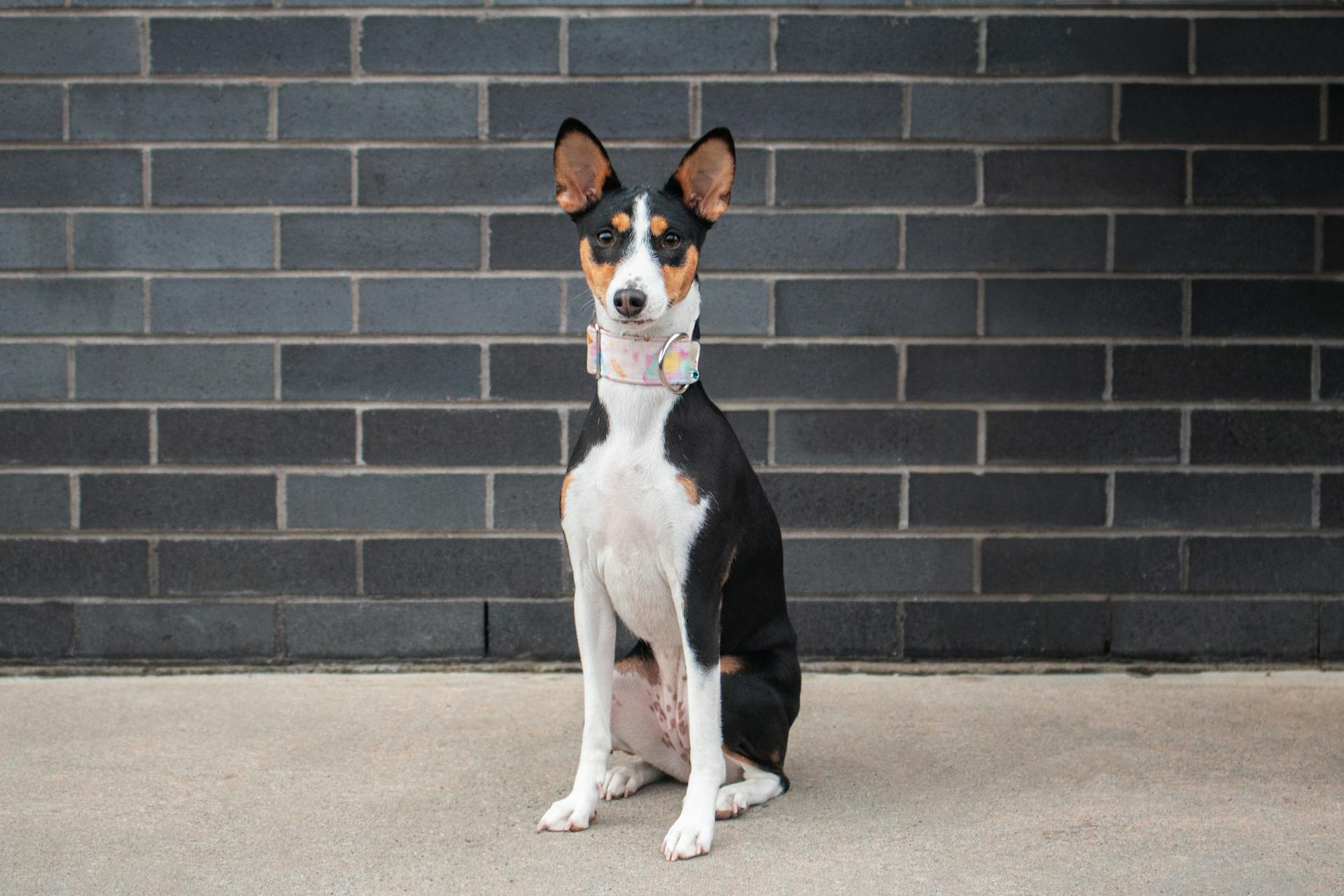
The breed characteristics of a dog can greatly impact your lifestyle and living situation. For example, some breeds require a lot of exercise, such as the Australian Cattle Dog, which needs at least 1 hour of physical activity daily.
Small breeds like the Chihuahua are generally quiet and won't disturb neighbors. However, larger breeds like the German Shepherd can be quite vocal and may not be suitable for apartment living.
Bulldog breeds, such as the English Bulldog, are prone to breathing difficulties and may need extra care in warm weather. On the other hand, breeds like the Siberian Husky are built for cold climates and can thrive in cooler temperatures.
Some breeds, like the Poodle, are highly intelligent and easy to train, but may require regular grooming. In contrast, breeds like the Beagle are relatively low-maintenance when it comes to grooming, but may be more challenging to train.
Curious to learn more? Check out: All Breeds Dog Grooming
Suitability for Owners
Choosing a dog breed that's a great fit for you and your lifestyle is crucial. There are over 376 breeds recognized by the United Kennel Club (UKC), so you have plenty of options to consider.
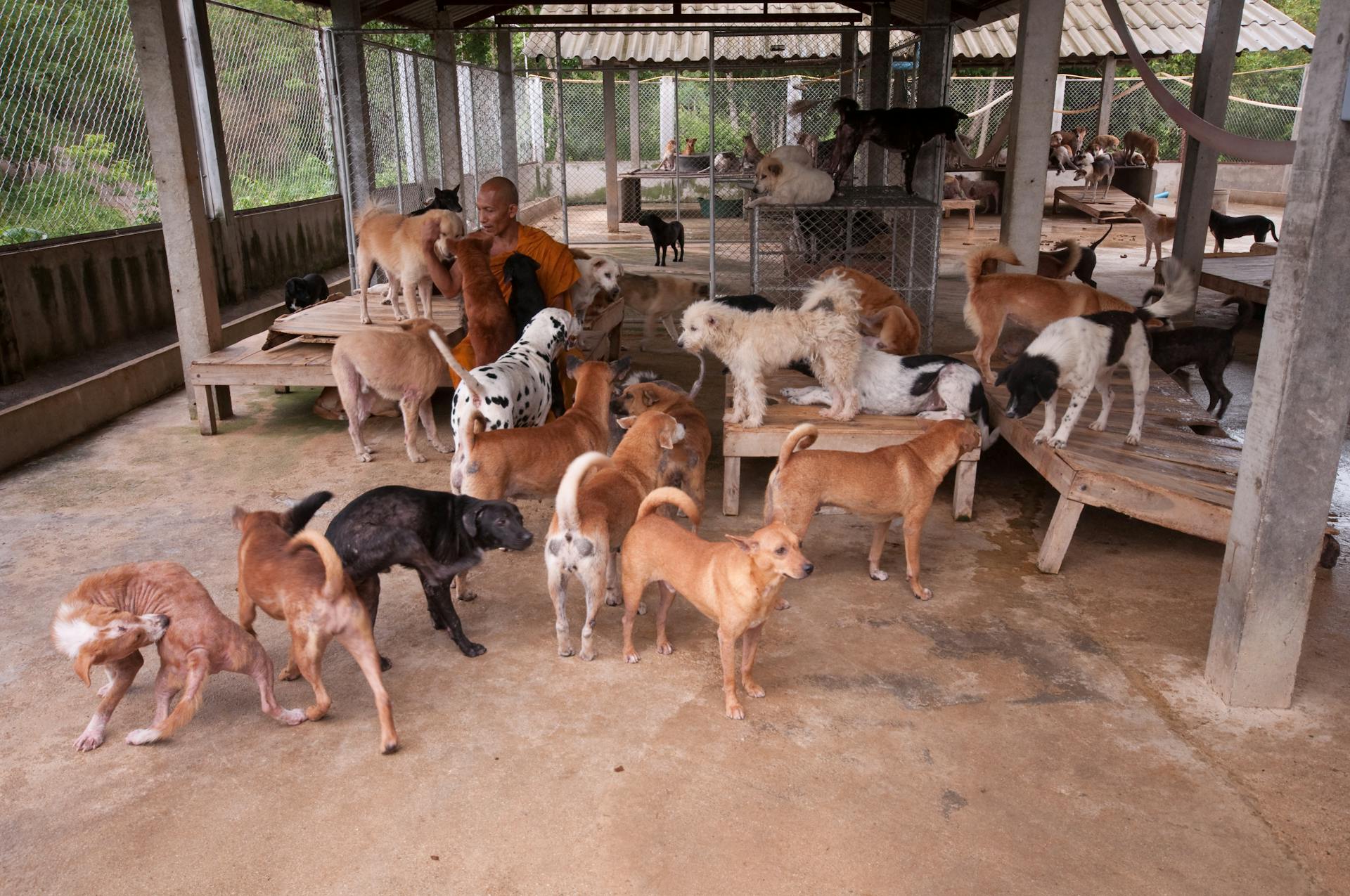
Researching a dog's unique needs is essential before bringing one home. This includes understanding the breed's requirements for exercise, grooming, and training.
The American Kennel Club (AKC) recognizes just 201 breeds, but that doesn't mean they're not a great fit for many owners. Some breeds are perfect for busy families or apartment dwellers.
Each dog has its own personality and needs, and it's essential to find a breed that fits your lifestyle. This means considering factors like your work schedule, living situation, and amount of time you have to devote to your dog.
Dog Facts and Information
Dogs are social animals and thrive on interaction with their human family members. They have a unique ability to form close bonds with their owners.
The average lifespan of a dog varies greatly depending on its breed, with some living up to 15 years or more. The smallest dog breed, the Chihuahua, can live up to 15 years.
Consider reading: 15 Breeds of Dogs
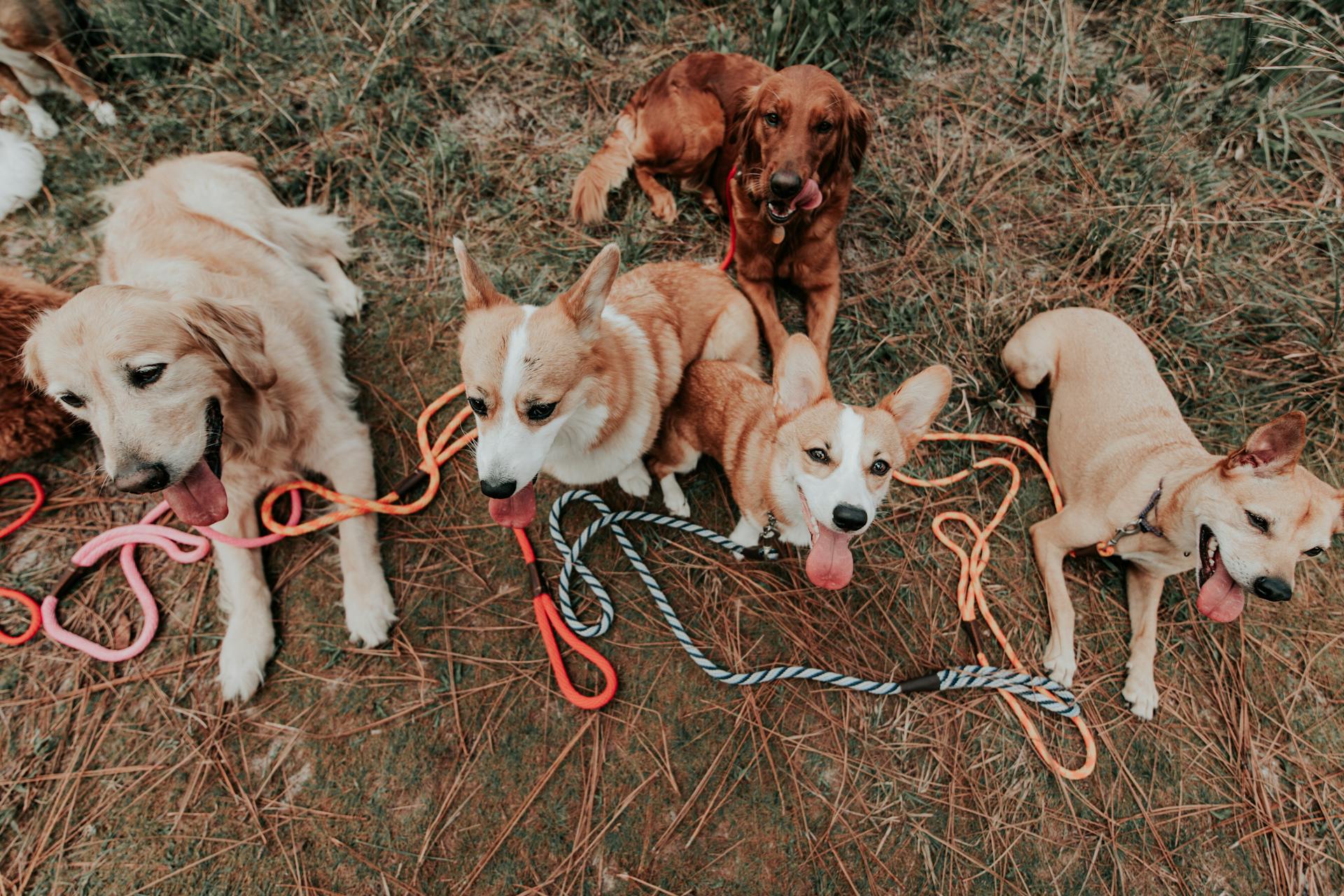
Dogs are highly intelligent animals and can be trained to perform a wide range of tasks. They have been used for centuries as working dogs, assisting with tasks such as herding and hunting.
Some breeds of dogs are naturally more energetic than others, requiring regular exercise to stay happy and healthy. The high-energy breed, the Border Collie, requires at least an hour of exercise per day.
Dogs have a unique sense of smell, with some breeds having up to 300 million olfactory receptors. This allows them to detect subtle changes in their environment.
Dogs are highly adaptable animals and can thrive in a variety of living situations, from apartments to homes with large yards.
Dog Jobs and Origins
Poodles were originally bred to retrieve birds in dense woods, marshes, and lakes, and their coats were cut in a way to keep them warm in the water.
Bloodhounds have an impeccable nose-sleuthing ability, making them a favorite among hunters. They were first bred in an 8th-century monastery in Belgium.
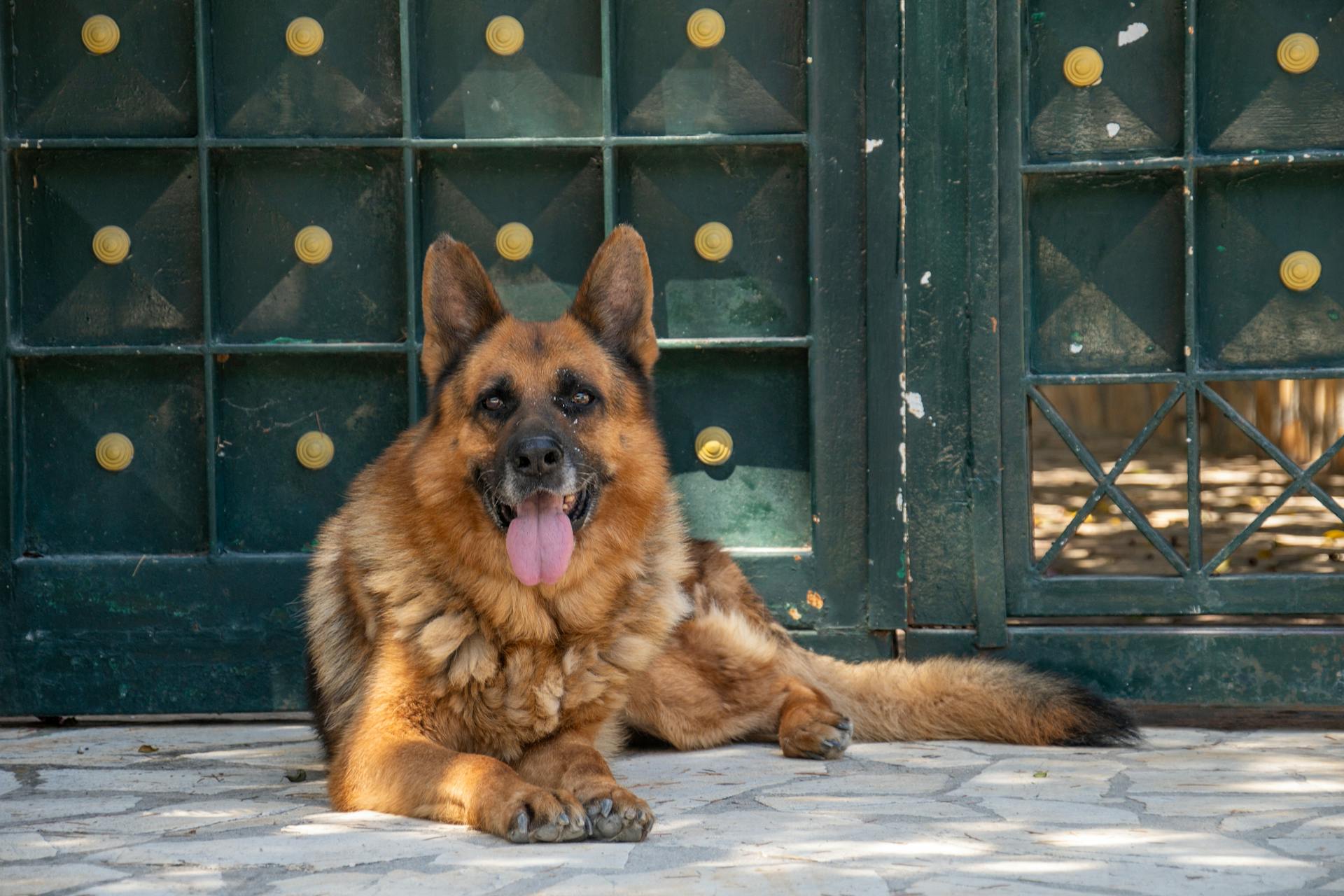
Pointers were bred to seek out but not kill birds, making them perfect for hunters who wanted to locate downed birds and retrieve them alive. This trait was developed in the 17th century.
Basset Hounds were bred to sniff out ground prey, and their short legs and long ears made them perfect for this job.
Corgis are prized for their herding abilities, and their low stature allows them to zip between sheep and goats to bring them back to the pen.
The Saint Bernard was originally bred as a rescue dog in the Swiss Alps, where their thick coats and muscle structure made them perfect for dealing with high altitudes and cold weather.
Greyhounds are the fastest dog breed, with elongated bodies and short digestive tracts that make them ideal for speed and agility.
Here are some dog breeds and their original jobs:
Dalmatians were originally bred as hunting dogs, guard dogs, and companions in the 17th century, and they have an uncanny affinity to get along with horses.
Pomeranians were bred to be smaller dogs, and Queen Victoria of England is largely responsible for their current size and appearance.
Dog Facts and Statistics
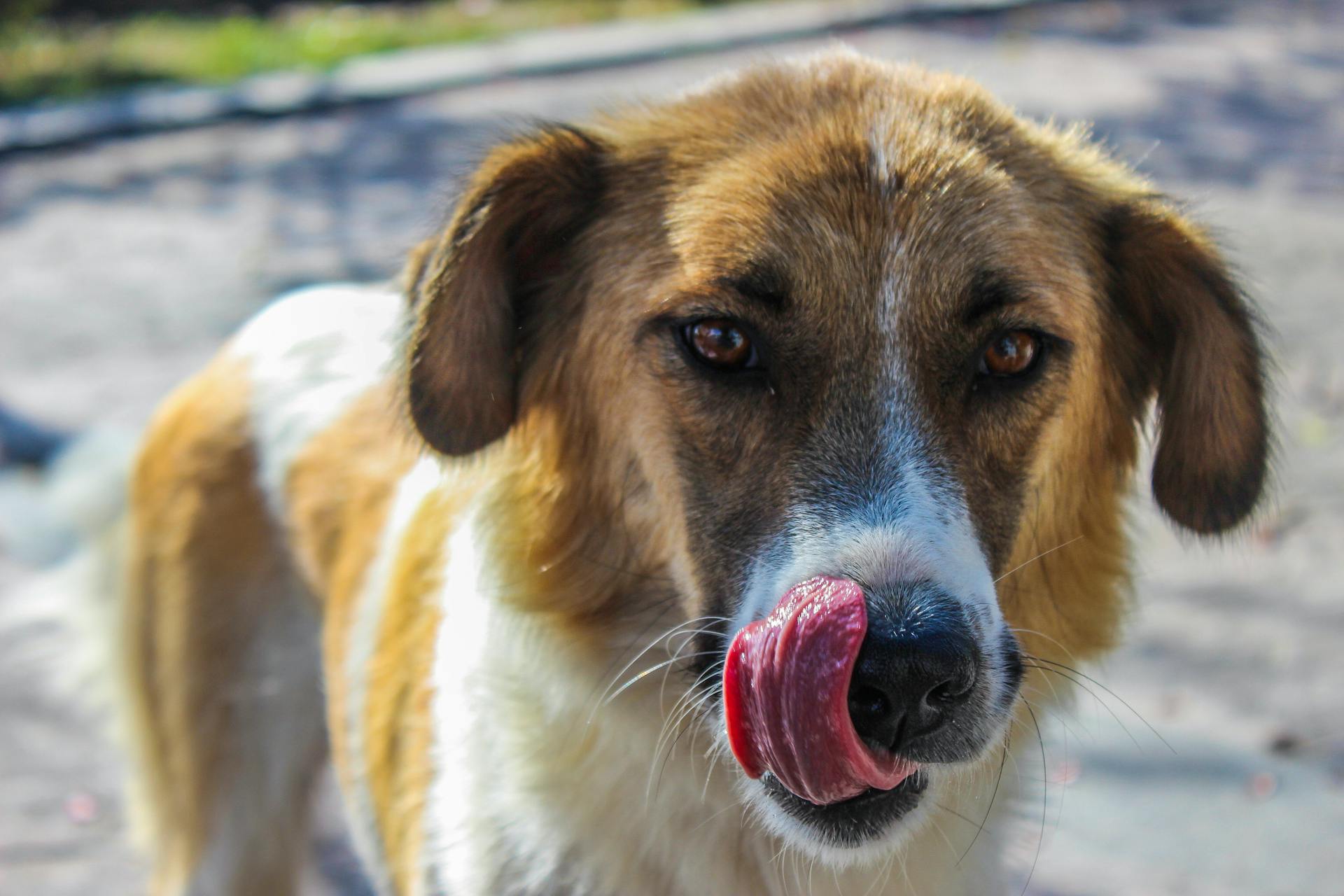
Did you know that all dogs, in their wonderful variety, are from the same species, Canis lupus?
More than 400 breeds exist worldwide, although only 178 are officially recognized.
Frequently Asked Questions
What are 50 facts about dogs?
Here are 50 fascinating facts about dogs, from their wolf ancestry to their incredible sense of smell and disease detection abilities, making them one of the most amazing creatures on the planet. Discover more about these incredible animals and their unique characteristics.
Featured Images: pexels.com

